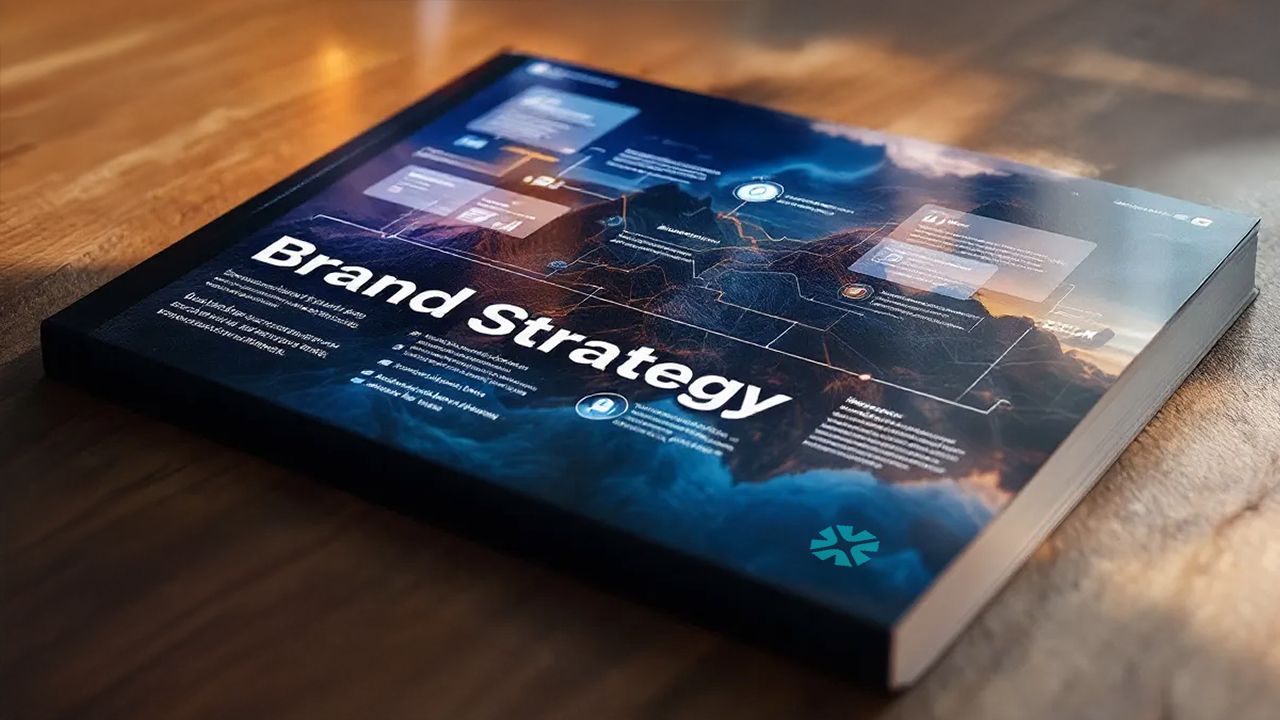Branding has always been a big part of who we are as humans, and it’s been around for ages. I remember being a kid, just fascinated by all the cool packaging on products. It’s amazing how a simple label can make you want something so much and even help define who you are. That’s the magic of branding; it’s woven into our society and gives me hope that it can spark some positive changes. Today, I want to dive into how branding has evolved from just a marketing tool to something that truly expresses our human spirit.
The Roots of Branding: A Brief History
Branding is not just a modern concept; it has deep roots that stretch back to ancient civilizations. It’s fascinating to think about how our ancestors communicated their beliefs through symbols. These symbols were more than just marks; they were the very essence of identity and community.
1. The Origins of Branding
The origins of branding can be traced back to ancient civilizations. In those early days, humans created symbols to communicate beliefs. Think about it: a simple mark could signify a tribe, a belief, or a product. It was a way to share information, without words. As far back as 10,000 years ago, we started to construct symbols to communicate our beliefs.
These symbols often represented cultural beliefs.
They were used in various forms, from tribal tattoos to pottery designs.
Branding was grassroots and community-driven.
In essence, branding began as a way for communities to identify themselves. It was a bottom-up approach, where the community's needs and values shaped the symbols they used. This is a stark contrast to how we often think of branding today, which can feel corporate and top-down.
2. Iconography and Cultural Representation
Iconography was super important in showing what different cultures believed in. Each symbol had its own special meaning. Like, for instance, a certain animal could stand for strength or wisdom. Back in the day, these early brands weren't just about selling stuff; they were all about showing who you were and what you valued. They were a way to communicate without saying a word.
Consider how we still use symbols today. Logos, colours, and designs communicate messages about who we are and what we stand for. Just as ancient tribes used symbols to convey their beliefs, modern brands use logos to signal their values. This connection between branding and identity is timeless.

3. The Evolution of Branding
Branding has really changed over the years. It started out as something that was all about the community, but as societies grew and developed, companies figured out how to use those symbols to make money. This switch completely changed how people saw branding, it became more about selling stuff than bringing people together. But here we are in the last decade, and things are starting to turn around again. Nowadays, consumers have way more power. They want brands to be real and to share their values. If a company misses the mark on this, they could easily lose their customers. Take movements like Black Lives Matter and Me Too, for example. They’re not just slogans; they really capture this new vibe of branding. They have recognizable names, hashtags, and logos, but they also push for real change in society. This shows that branding can be more than just making money—it can be something that reflects who we are as people. So, at the end of the day, branding is a big part of how we connect with each other. It’s come a long way from simple symbols to the logos we see today, but the main idea hasn’t changed: it’s all about sharing identity and values. Understanding where branding comes from can really help us build stronger connections, both in our personal lives and at work.
The Shift from Bottom-Up to Top-Down Branding
Branding has a rich history. It has evolved dramatically over the centuries. Originally, branding emerged organically from communities. People created symbols and designs that represented their beliefs and values. These symbols were not just for marketing; they were part of identity. Think about it: how did we communicate who we were before the internet? We used signs, symbols, and stories.
However, over the past 250 years, a significant shift occurred. Corporations recognized the power of branding. They appropriated these organic symbols to gain consumer attention. This was the birth of top-down branding. Brands like Coca-Cola and Apple began to dominate the market, often overshadowing smaller, grassroots efforts. They used advertising and marketing strategies that appealed to the masses, but often at the expense of individual voices.
The Rise of Top-Down Branding
Top-down branding is all about control. Corporations dictate the narrative. They decide what consumers should want. This model has worked for a long time. But, as we see today, it’s starting to crumble. Consumers are no longer passive recipients of marketing messages. They are active participants in the branding process.
Historically, branding emerged organically.
Corporations appropriated branding to gain consumer attention.
Branding dynamics are shifting back to grassroots.
The Shift Back to Grassroots
Now, we are witnessing a return to grassroots branding. Consumers want authenticity. They seek brands that align with their values. This is a powerful shift. It’s a democratization of design and branding. Brands are no longer just about selling products; they are about telling stories.
Take Nike, for instance. Their decision to support Colin Kaepernick was a bold move. It sparked controversy but ultimately resonated with many consumers. They appreciated Nike's willingness to stand for something. This is the essence of bottom-up branding. It’s about connecting with people on a deeper level.
Examples of Bottom-Up Branding
There are numerous brands that have adopted bottom-up strategies. Look at movements like Black Lives Matter. They have created a strong brand identity with a name, hashtag, and logo. This movement has not only raised awareness but also sparked societal change. The pink Pussyhat and Me Too movements are similar examples. They challenge norms and provoke shifts in behavior.
These grassroots efforts highlight a crucial point: consumers have the power to influence the future. They are not just buying products; they are supporting ideas and movements. This shift is exciting. It means that branding is no longer just about capitalism. It’s about the human spirit.
"It's really only in the last 250 or so years that the model of bottom-up branding was tipped..."
As we navigate this evolving landscape, it’s essential to ask ourselves: Why do we need this brand? What benefit does it provide? These questions help define the purpose of a product or movement. If we can answer them effectively, we can build brands that resonate with society and the planet.
Consumer Empowerment and Expectations
In today's world, consumers hold more power than ever before. This shift is not just a trend; it's a fundamental change in how we view brands and their role in society. So, what does this mean for businesses? Let’s dive into the key aspects of consumer empowerment and expectations.
1. The Demand for Authenticity
Modern consumers prioritize brand authenticity. They want to know that the companies they support align with their values. This is not just about the product; it’s about the story behind it. Consumers are increasingly discerning. They seek brands that are transparent and genuine. Have you ever bought a product and later felt uneasy about the company’s practices? That discomfort is becoming more common.
As Debbie Millman points out, “People want to understand...that what they're buying are coming from companies they feel are worthy of contributing to.” This statement captures the essence of today's consumer mindset. We are not just buyers; we are advocates for brands that resonate with our beliefs.
2. Risk-Taking Brands: The Nike Example
Brands like Nike exemplify risk-taking in their messaging. When Nike decided to support Colin Kaepernick, it was a bold move. Initially, it faced backlash. However, this decision ultimately led to increased loyalty from many consumers. Why? Because Nike communicated its beliefs with authenticity. They took a stand on social issues, and consumers responded positively.
This case shows that taking risks can pay off. It’s not just about selling shoes; it’s about standing for something larger. When a brand takes a stance, it invites consumers to join a movement. This is powerful. It creates a community around shared values.
3. Purpose-Driven Brands
Customers today gravitate towards purpose-driven brands. They want to support companies that make a difference. This goes beyond profit; it’s about impact. Brands that contribute to social change resonate more with consumers. They are seen as allies in the fight for a better world.
Brands that support social movements, like Black Lives Matter, are gaining traction.
Movements like the pink Pussyhat and Me Too challenge societal norms.
These brands have a clear message and a strong identity.
This new branding ethos emphasizes that consumers can influence the future through their purchasing decisions. It’s not just about what we buy; it’s about what those purchases represent.
4. The Role of Social Discourse
Social discourse plays a crucial role in shaping brand strategies. Brands must listen to their consumers. They need to understand the conversations happening in society. This understanding can guide their messaging and product development. It’s a two-way street.
By analyzing case studies of brands reacting to social change, we can see how effective this approach can be. Brands that adapt and respond to societal needs often find greater success. They become part of the conversation, rather than just spectators.
In conclusion, the landscape of consumer empowerment is evolving. We, as consumers, have the ability to shape the brands we support. By prioritizing authenticity, embracing risk, and aligning with purpose-driven initiatives, we can make informed choices that reflect our values. The power is in our hands, and it’s time we use it wisely.
Case Studies: Brands Leading Social Change
Brands today are not just about selling products. They're about making statements. They can drive conversations and influence social change. Let’s dive into some powerful examples of brands that have taken a stand and sparked significant movements.
Nike and Colin Kaepernick
Nike's support of Colin Kaepernick is a prime example of branding intersecting with social issues. When Nike featured Kaepernick in their advertising campaign, it ignited a nationwide conversation about race, justice, and equality. Some people were outraged, leading to protests and even the burning of Nike products. But what happened next? The backlash didn’t last long. Many consumers rallied behind Nike, appreciating the brand's willingness to take a stand.

Authenticity Matters: Nike’s message resonated with consumers who value authenticity. They want brands that align with their beliefs.
Long-term Loyalty: This campaign didn’t just create noise; it built a loyal customer base that supports Nike for its values.
As I reflect on this, I can't help but ask: How many brands are willing to risk their reputation for a cause? Nike did, and it paid off.
Black Lives Matter: A New Era of Branding

The Black Lives Matter movement is another powerful example where branding meets social change. It’s more than just a hashtag; it’s a movement that has transformed the way we think about race and justice. The brand elements such as name, logo, and online presence, have become symbols of resistance and hope.
Community Engagement: The movement has engaged millions, creating a sense of community and shared purpose.
Branding for Change: It shows how branding can be a catalyst for societal change, not just a marketing tool.
In this case, the brand represents a collective voice. It’s a reminder that branding can be a profound manifestation of the human spirit.
The Impact of Me Too and the Pussyhat

Let’s not forget the impact of campaigns like Me Too and the Pussyhat. These movements have challenged societal norms and provoked shifts in behavior. The Pussyhat, for example, became a symbol of resistance during the Women’s March. It’s simple yet powerful. It’s a visual statement that speaks volumes.
Visual Identity: The bright pink color and simple design made it easily recognizable and relatable.
Empowerment: The movement empowered individuals to speak out against harassment and inequality.
Similarly, the Me Too movement has encouraged countless individuals to share their stories, creating a ripple effect of awareness and change. It’s a testament to how branding can foster community and drive social progress.
As we analyze these movements, it’s clear that certain behaviors are no longer tolerated. Brands that embrace this change are not just surviving; they’re thriving. They’re transforming the landscape of consumer behavior and expectations.
"Branding has become a profound manifestation of the human spirit."
In conclusion, these case studies illustrate the power of branding in shaping social narratives. They remind us that consumers have the power to influence the future through their purchasing decisions. It’s an exciting time for brands willing to take a stand and make a difference.
The Future of Branding: Questions of Purpose
Every brand needs to define its 'why.' This is not just a trendy catchphrase. It’s a fundamental question that can shape the entire identity of a brand. Why does your brand exist? What purpose does it serve? These questions are essential in today’s marketplace. Consumers are more discerning than ever. They want to know the story behind the products they buy and the movements they support.
Understanding the Benefit
Understanding the benefit of a product or movement is crucial. It’s not enough to simply sell a product; brands must articulate what makes them valuable. This goes beyond features and specifications. It’s about the emotional connection. What problem does your product solve? How does it improve lives? When brands can answer these questions, they create a compelling narrative that resonates with consumers.
Define Your Mission: Clearly articulate your brand's mission. This should reflect your core values and beliefs.
Communicate Benefits: Focus on the benefits your product or movement provides. Make it relatable.
Engage Emotionally: Create an emotional connection. People buy based on feelings, not just logic.
Authenticity is Key
Authenticity and purpose drive successful branding today. Consumers crave honesty. They can spot inauthenticity from a mile away. Brands that try to be something they’re not will struggle to gain trust. Instead, brands should embrace their unique stories. This is what sets them apart in a crowded market.
For instance, consider Nike’s support for Colin Kaepernick. Initially, it faced backlash. However, this bold move ultimately garnered long-term support. Why? Because it was authentic. Nike communicated its beliefs clearly and stood by them. This is a powerful example of how authenticity can lead to brand loyalty.
Reflect on the Brands You Support
As consumers, we have the power to influence the market. I encourage you to reflect on the brands you support. Do they align with your values? Are they making a positive impact? Remember, people are going to be giving you money for this product or a piece of their soul if it is a movement. This is a significant responsibility for both consumers and brands.
In branding, it’s essential to understand the markers of success or failure.
I often emphasize two critical questions:
“Why do we need this thing, idea, belief, product?”
and
“What is the benefit?”
If you have sound strategic answers to both those questions, then you have something that you can begin to build on. This clarity will guide your branding efforts and help you connect with your audience on a deeper level.
In conclusion, the future of branding hinges on purpose and authenticity. As we move forward, let’s embrace these principles. They are not just marketing strategies; they are the foundation of meaningful connections between brands and consumers.
The Markers of Success in Branding
When we think about branding, what comes to mind? Is it the logo? The colors? Or perhaps the catchy slogan? While these elements are important, the true markers of success in branding lie deeper. They are rooted in consumer belief and trust.
1. Gauge Success Through Consumer Belief and Trust
To truly measure the success of a brand, we must ask ourselves: Do consumers believe in what we stand for? Trust is the foundation of any successful brand. Without it, even the most beautiful logo will fail to resonate. Think about it: when you trust a brand, you are more likely to purchase their products, recommend them to others, and remain loyal over time.
So, how do we gauge this trust?
Here are a few metrics:
Customer Feedback: Surveys and reviews can provide insight into consumer perceptions.
Brand Loyalty: Repeat purchases are a strong indicator of trust.
Social Media Engagement: High engagement rates often reflect a strong connection with the audience.
2. Identify Common Pitfalls in Branding Implementation
Even the best brands can stumble. It’s crucial to recognize common pitfalls that can derail branding efforts. Here are a few to watch out for:
Inconsistency: A brand that sends mixed messages can confuse consumers.
Ignoring Feedback: Brands that don’t listen to their audience risk losing their trust.
Overcomplication: Sometimes, less is more. A complicated brand message can alienate customers.
By being aware of these pitfalls, we can navigate the branding landscape more effectively. It’s about making informed decisions that align with consumer expectations.
3. Share Insights on Refining Brand Messaging
Refining brand messaging is an ongoing process. It’s not just about what we say, but how we say it. Here are some strategies to enhance our messaging:
Be Authentic: Consumers appreciate brands that are genuine. Authenticity builds trust.
Align with Values: Today's consumers want to support brands that reflect their beliefs.
Simplify Your Message: Clear, concise messaging is more effective than complex jargon.
As I often say,
"The markers of success or failure in branding are really evident. It's in how many people believe you."
This quote encapsulates the essence of branding. If we can connect with our audience on a deeper level, we are more likely to succeed.
In this new era of branding, we really do have the power to change the future of this planet. By focusing on belief, trust, and authenticity, we can create brands that not only thrive but also contribute positively to society.
In a nutshell: A Call to Action for Brands
As we wrap up our discussion on branding, it’s clear that we are witnessing a profound transformation. Brands are no longer just about selling products; they are about telling stories and embodying values. In this new landscape, I invite brands to embrace authenticity and social responsibility. This is not merely a trend; it’s a necessity. Consumers today are more informed and engaged than ever before. They want to know what a brand stands for, and they expect transparency.
Think about it: when was the last time you made a purchase solely based on a catchy advertisement? More likely, you considered the brand's values. You wanted to support a company that aligns with your beliefs. This shift highlights the importance of encouraging consumer awareness of the values behind brands. It’s essential for consumers to ask questions. What does this brand represent? How does it contribute to society? By fostering this awareness, we empower ourselves to make choices that reflect our values.
Moreover, brands should adopt a community-centric approach. This means engaging with consumers on a deeper level. It’s about building relationships rather than just transactions. When brands listen to their communities, they can create products and services that truly resonate. This connection fosters loyalty and trust. It’s a win-win situation. Brands gain dedicated customers, and consumers feel valued and heard.
As I reflect on the evolution of branding, I’m reminded of the quote,
“We have the power to change through our decisions about what we buy and contribute to.”
This statement encapsulates the essence of our discussion. Each purchase is a vote for the kind of world we want to live in. When we choose to support brands that prioritize social responsibility and authenticity, we contribute to a larger movement towards positive change.
Branding is indeed the intersection of commerce and human experience. It’s a powerful tool that can drive societal change. We’ve seen this in movements like Black Lives Matter and the Me Too movement. These initiatives have not only challenged the status quo but have also redefined what it means to be a brand. They remind us that branding is not just about logos or slogans; it’s about making a meaningful impact.
In conclusion, let’s encourage brands to step up. Let’s challenge them to be more than just profit-driven entities. We need brands that reflect our values and contribute positively to society. As consumers, we hold the power to influence this change. Let’s engage with brands thoughtfully and support those that align with our beliefs. Together, we can shape a future where branding serves humanity, not just capitalism.



